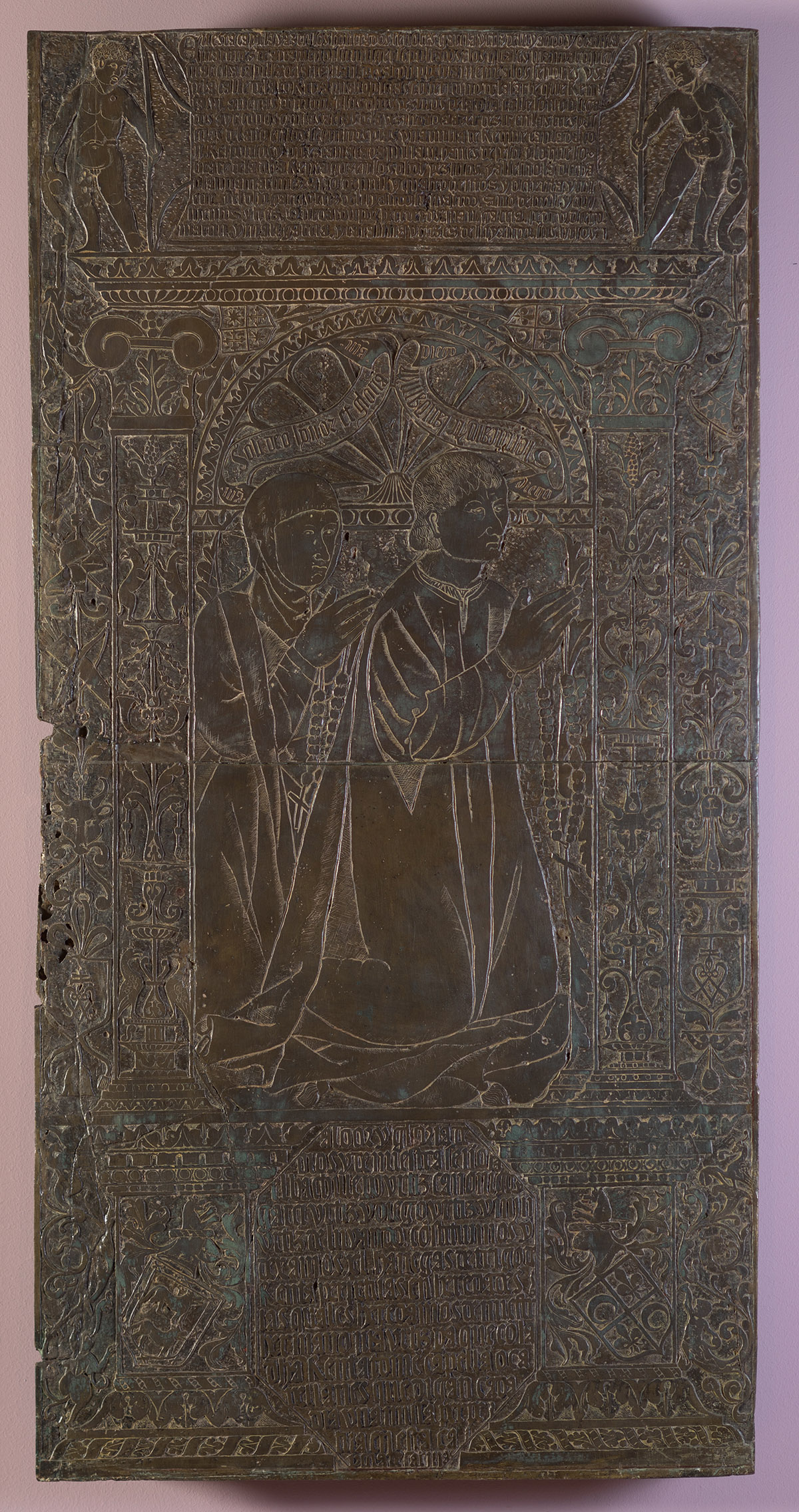Tomb lid of García Ortiz de Luyando and Osana Martínez de Arzamendi
Tomb lid of García Ortiz de Luyando and Osana Martínez de Arzamendi
This funerary tomb lid was fixed to the wall of the Chapel of Saint John. It was part of the will drawn up by García Ortiz de Luyando in 1503. His aim was to create a funerary space to be buried next to his wife, Osana Martínez de Arzamendi, who died in 1489. It is the oldest Renaissance funerary piece in the city, dating back to around the early 16th century. It is made of brass and is of Flemish origin, produced in the Netherlands or by a Flemish sculptor who settled in Alava. It depicts García Ortiz de Luyando and his wife, Osana Martínez de Arzamendi, in a praying position in a shell-shaped niche, dressed fashionably and each holding a rosary and flanked by two pilasters decorated a candelieri with archaeological motifs. The tomb lid is surmounted by the family coats of arms and two inscriptions in Gothic characters that describe the main details of the foundation of the chapel.
Locution
Ficha técnica
BASIC BIBLIOGRAPHY
MARTÍN MIGUEL, María Ángeles. Arte y cultura en Vitoria durante el siglo XVI. Vitoria-Gasteiz: Ayuntamiento de Vitoria-Gasteiz, 1998, pp. 309-313.
REDONDO CANTERA, M.ª José. El sepulcro en España en el siglo XVI: tipología e iconografía. Madrid: Ministerio de Cultura, 1987.
VAN BELLE, Ronald. Laudas flamencas en España. Bilbao, Ediciones Beta, 2001. pp. 46, 50, 150-158.
BARTOLOMÉ GARCÍA Fernando R.; TABAR ANITUA, Fernando. “La capilla de San Juan Bautista en la Catedral de Vitoria-Gasteiz. Elementos muebles y nuevos documentos”. En: Micaela Portilla homenaje in memoriam. Vitoria-Gasteiz: Diputación Foral de Álava, 2007, pp. 350-354.


